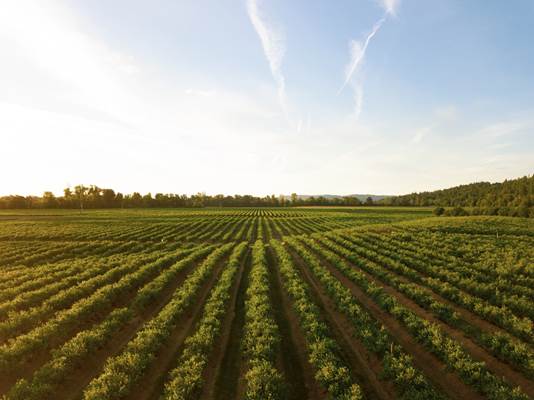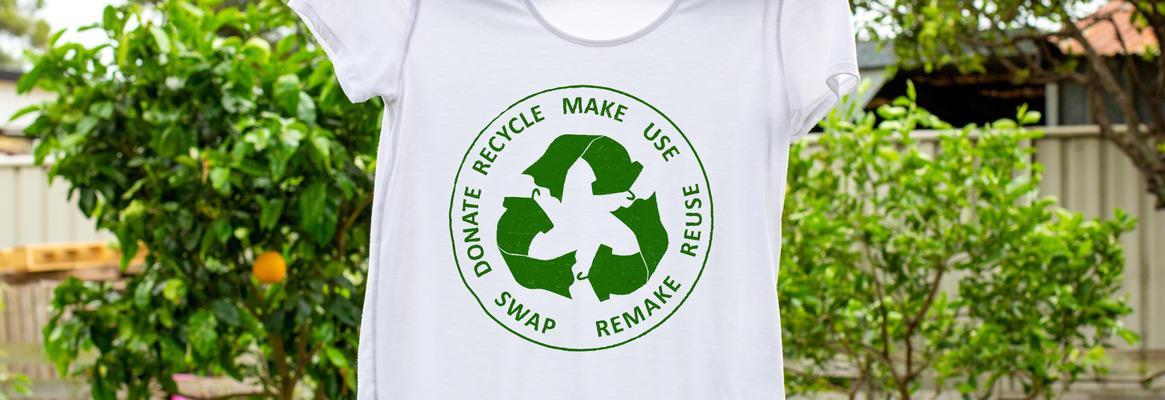Though the trend towards sustainable fashion is positive and slows down the degradation of nature the textile industry is responsible for, it does little in the way of restoring used resources back into nature. A fully closed-loop system is the only way forward, and possibly the only way to reverse the effects of human’s harmful ways. Some brands have already begun exploring the processes.
Nature existed long before humans came onto the scene; and will continue to exist long after we are gone. That is because before we came into existence before the Industrial Revolution brought about technology and its subsequent waste, nature had created a system for itself. The structure is a regenerative one, in which every part of the ecosystem works in perfect equilibrium. Whatever energy nature takes out, it puts right back in, functioning via a closed-loop system.
Over the years, we have fractured this perfectly synchronised process, consistently taking resources and producing waste, without putting the necessary energy back in. Our disruptive behaviours and one-sided relationship with nature have guided us towards the crises we find ourselves in today. The environmental situation has become dire and if we don’t act soon, it is humans who will find themselves most at threat in the end. Without us in the way, nature will once again begin the long process towards restoring itself to balance. But we will be left threatened with the consequence of extinction if we do not reverse the effects of our decades-long ignorant and selfish practices.
Globally, there are many who have understood this threat and have thus begun to incorporate sustainable practices into their lives. Both individuals, as well as big companies who use nature’s energy and other resources on a larger scale, have started to dial it back. But whereas sustainability is a fantastic start, it merely stops the further decline of nature into imbalance. Unfortunately, it does not do much in bringing the resources that nature needs back into the equation.
“The word sustainable is like a dinosaur now,” says Aras Baskauskas, the CEO of Los Angeles based label Christy Dawn, in his recent Vogue interview with Emily Farra. “What are we trying to sustain — the fires, the tornadoes, the mass extinction? We don’t need to be sustainable, we need to be regenerative.”
He isn’t wrong. The damage we have caused is so severe that we must go beyond just incorporating sustainable practices in order to fix the entirety of the broken ecosystem. Rather, we need to couple sustainability with regenerative practices, ensuring that nature reaches balance while we are still here to see it.
Weaving regenerative processes into the fashion industry may seem like an overwhelming task. Historically, the word has more often come up in the food industry. Regenerative farming is similar to organic farming in that pesticides are eliminated. Yet it goes a step further than organic farming in that it also replenishes the resources that have been used on the farm.
To designers working with textiles, this process is still something relatively new. Yet some, like Baskauskas and his wife, Christy Peterson, have already taken the leap, and have seen first-hand that the results are beneficial to not only nature but to ourselves as well. Baskauskas and Peterson built their brand on a sustainable platform first, working with deadstock fabrics instead of new textiles, before transitioning towards the incorporation of regenerative processes. “For the first five years of our brand, we were super proud that we haven’t been part of the problem,” says Baskauskas. “But it weighed on us that we weren’t part of the solution, either.”
So what does a regenerative farm look like? Not surprisingly, it is the complete opposite of what you may imagine a farm to be. For most of us, when we envision a farm, we think of rows upon rows of a single type of crop. Yet this vision of a farm is an extremely outdated process of farming that only came into practice as a result of WWII. At the time, the US was the main food provider worldwide and in an effort to produce a large quantity, for very little cost, chemicals such as synthetic nitrogen were produced in order to yield more food in a shorter amount of time.
In reality, a modern farm should look no different than what nature produces on its own, without the intervention of humans. It should have various different crops, each of which somehow aids in the growth or restoration of the soil, energy, or other crops on the land. Each crop serves multiple functions, such as “cover crops” which aid in shading soil so it can stay cool and absorb more water and thus grow more microbiomes.

Regenerative farms also grow “pollinator strips”, or sections of crops that attract desired bees and butterflies to the area in order to help pollinate. Opposingly, they may also have “trap crops”, (used as a natural alternative to chemical pesticides) which are specific crops meant to divert pests from crops.
Patagonia has long been a trailblazer in sustainable and regenerative practices involving textiles, inspiring other brands to join in on the path towards good fashion. Just recently the brand released its first collection of t-shirts made from regenerative organic farms in India.
Since the release, Patagonia has partnered with many farmers who work on regenerative farms. Helena Barbour, head of Patagonia’s sportswear, says “It’s very dramatic to find something that doesn’t just mitigate a problem, or reduce the impact of a problem, but it actually does something good.”
She adds that while to many the conversation of regenerative practices is something new, it is actually steeped in tradition for others, especially farmers. “Many of the farmers in India said this was like going back to their traditional practices...,” she says. “They said their great-grandfathers used to farm like this, but then they just got approached by all the chemical companies [selling] synthetic fertilisers.”
The work that brands like Patagonia and Christy Dawn have done in shifting towards regenerative ag proves that it is possible for other fashion brands to do the same. “I do believe fashion is where we can mainstream regenerative ag,” says Rebecca Burgess, founder of Fibershed, a non-profit that develops regenerative textile systems. “I think in some ways, it’s more poised than the food industry to lead [the conversation] because fashion is more permanent.”
If this is the case, then now, as we continue to question the industry and shift its direction dramatically, is a good time as any to start imitating nature. For she will always be here. It is we who may not.
This article has not been edited by Fibre2Fashion staff and is re-published with permission from synzenbe.com








Comments